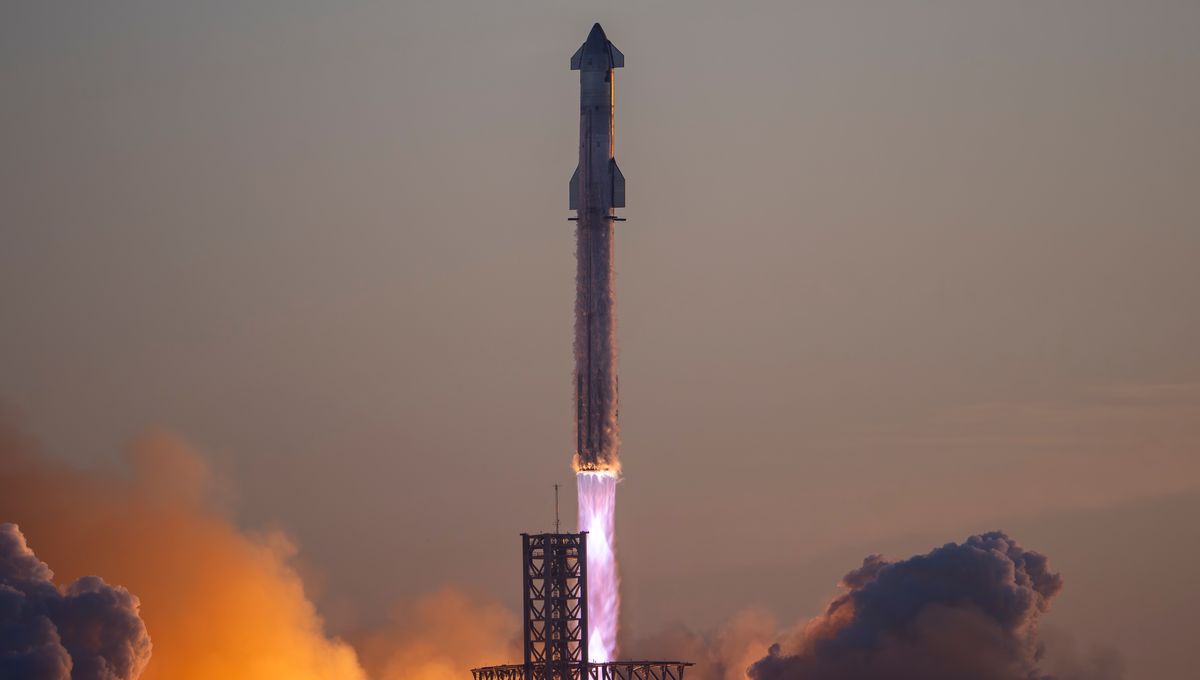
SpaceX’s Starship rocket successfully blasted off on its second test flight on Saturday morning – and then came to an abrupt end just 8 minutes later. But whilst the explosion of both the first-stage booster and ship has dashed the hopes of putting astronauts back on the Moon in 2025, many are still considering the test flight a success.
What happened?
Cheers and screams of excitement could be heard from SpaceX’s mission control center during a livestream of Saturday’s launch, as Starship lifted off from Starbase in Texas just after 7 am local time (1 pm GMT). The noise swelled again a few minutes later when the first-stage booster, Super Heavy, successfully separated from the ship – only to explode less than a minute later.
“As you could see, the Super Heavy Booster has just experienced a rapid unscheduled disassembly; however, our ship is still underway,” said commentator Kate Tice. That didn’t last for long though, as around 9 minutes in, contact with the ship was lost. It was later revealed that the mission was terminated by onboard computers – for reasons yet to be uncovered – which triggered the ship to explode.
Another partial success
This was a vast improvement compared to the first test launch back in April, when SpaceX was forced to blow the rocket up just 4 minutes after launch, after Super Heavy experienced engine failures and didn’t separate. As a result, the company introduced a multitude of modifications to both Starship and its launchpad, which was damaged during the first test.
One of the key differences was the use of “hot staging” – instead of firing its engines after the booster separates, the ship’s engines fire whilst still attached, giving it some extra power. Elon Musk, CEO and founder of SpaceX, had previously called this “the riskiest part of the flight.”
Given that this approach to booster separation worked, in spite of the risks, many are viewing this launch as another partial success. This includes SpaceX, posting to X (formerly known as Twitter) calling the launch “an exciting second integrated flight test of Starship”.
“With a test like this, success comes from what we learn, and today’s test will help us improve Starship’s reliability as SpaceX seeks to make life multiplanetary.”
Will we make it to the Moon in 2025?
Still, the result of Saturday’s test will come as a disappointment for those hoping for a Moon landing in 2025. NASA announced earlier this year its plans for the Artemis III mission to have humans back on the Moon in 2025, and current contracts mean that it’s relying on the success of Starship for this.
The more delays in Starship’s development, the more likely it is that the mission will also be delayed. Not to mention, both stages of the rocket are meant to be reusable – a massive money-saver for space travel – so getting a handle on any other “rapid unscheduled disassembly” will likely be an important focus in the next stages of modifications and improvements.
Source Link: Starship May Have Exploded Again, But It’s Still A Success